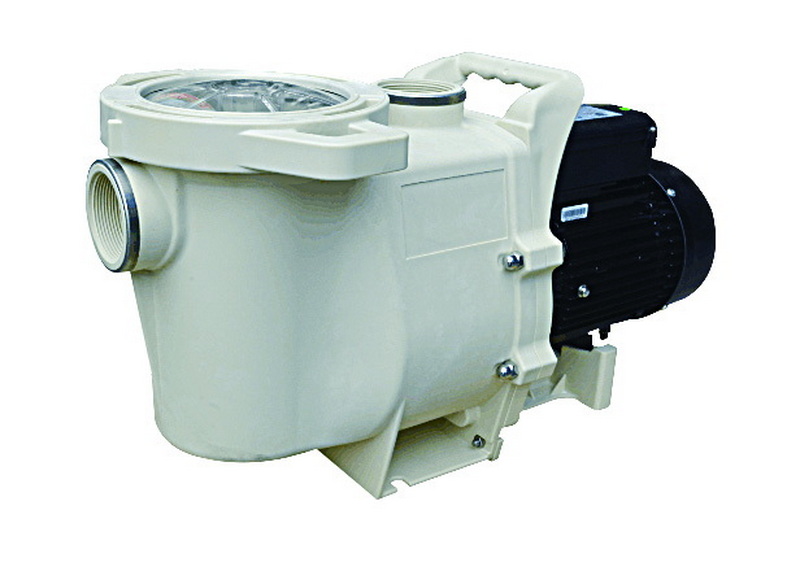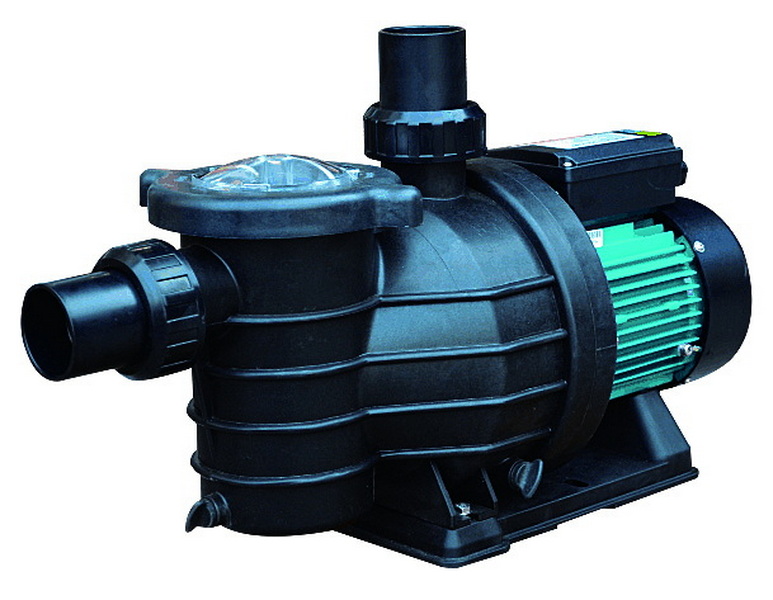







Content Menu
● What Is a Pool Pump and Its Importance?
● How Long Does a Pool Pump Last?
● Factors That Influence Pool Pump Longevity
>> Build Quality & OEM Standards
>> Routine Maintenance Practices
● Understanding Pool Pump Components
● Detailed Guide to Pool Pump Maintenance
>> Weekly Maintenance Checklist
>> Monthly Maintenance Checklist
>> Seasonal Maintenance (Every 3–6 Months)
>> Pre-Season & Winterization Steps
● Troubleshooting Common Pool Pump Problems
● Energy-Saving Upgrades and OEM Solutions
● Professional Versus DIY Maintenance
● Signs It's Time for Repair or Replacement
● The Lifespan Benefit of Routine Care
>> 1. How long do pool pumps typically last?
>> 2. What reduces a pool pump's lifespan?
>> 3. How can pool pump lifespan be extended?
>> 4. What are early signs of pool pump failure?
>> 5. Should I repair or replace a failing pool pump?
A pool pump is the central component of any swimming pool filtration system, responsible for circulating water and maintaining its clarity and safety. Whether managing a home swimming pool or a large commercial site, understanding how long a pool pump lasts—and the factors that affect its longevity—is vital for owners and facility managers. This comprehensive guide explores the average pump lifespan, the impact of design and maintenance, troubleshooting tips, installation guidance, and best practices, with multimedia recommendations for clearer understanding.[10][11]

A pool pump draws water from the pool, pushes it through filtration media, and returns it clean. This constant movement eliminates debris, dirt, and microorganisms, ensuring a safe swimming environment and avoiding damaging build-ups. A pump operating below par can lead to hazy water, increased health risks, and costly repairs.[10]
Industry averages suggest that modern pool pumps last between 8 and 15 years with good maintenance and normal use. Single-speed pumps typically last 7–10 years, while variable-speed models with less wear can reach 10–15 years. Motors may need replacement after 8–12 years, even if the pump housing remains intact.[12][13][14][15][10]
| Pump Type | Average Lifespan |
|---|---|
| Single-Speed | 7 – 10 years wavetechspoolandspa |
| Variable-Speed | 10 – 15 years wavetechspoolandspa |
| Above-Ground Pumps | 3 – 7 years youtube |
| In-Ground Pumps | 8 – 15 years youtube |
Pumps running more than 8–12 hours per day—common in warm climates or commercial pools—experience more wear, often resulting in shorter lifespans.[11][15]
Durable construction, especially from manufacturers who use advanced automated production and premium materials, leads to longer lifespans and fewer breakdowns.[14][12]
Pumps installed with precise plumbing, proper flow rates, and secure electrical connections suffer less vibration, strain, and leak risks, supporting longer operational life.[15][11]
Clean baskets, balanced chemistry, healthy seals, and routine professional inspections are essential to extending a pump's life.[2][17][18][19]
Exposure to extreme heat, humidity, salt, airborne debris, or aggressive pool chemicals causes faster wear of pump seals and electronic parts, making location and shielding important.[11][10]
To maintain and extend your pool pump's life, first recognize its essential parts:[2]
- Motor: Drives water movement
- Impeller: Pushes water through the system
- Pump Basket: Collects debris before it enters sensitive areas
- O-rings & Seals: Prevent leaks and maintain pressure
Routine inspections of these areas catch early signs of trouble and help avoid costly failures.

Consistent, thorough maintenance ensures optimal pump operation and extends service life well beyond averages. Below are actionable tips organized by frequency:[5][2]
- Skim Debris: Remove leaves and floating contaminants from pool surface.[4]
- Clean Pump and Skimmer Baskets: Prevent blockages and maintain water flow.[6][5]
- Check for Noises or Vibration: Early detection of motor or impeller issues.[5]
- Monitor Water Return Jets: Ensure strong and even flow throughout pool.[5]
- Inspect O-rings on Pump Lid: Check for cracks or dryness; lubricate as needed.[3][5]
- Remove and Clean Pump Basket: Avoid hidden build-up that strains the motor.[5]
- Check Motor Ventilation: Clear cooling fan vents of dust and debris.[5]
- Lubricate All Seals: Use silicone-based lubricants to prevent leaks and maintain suction.[3][5]
- Inspect Shaft Seal & Mechanical Seals: Replace any showing signs of wear.[5]
- Tighten All Mounting Hardware: Prevent vibration-related damage.[5]
- Clean Motor Exterior: Prevent overheating caused by dust.[5]
- Flush Filter System: Ensure smooth water circulation and prevent pump overload.[5]
- Deep Clean All Pump & Skimmer Baskets: Rinse thoroughly after off-season.[6][2]
- Inspect and Replace Leaky Hoses or Fittings: Prevent water or air leaks.[2]
- Check the Impeller: Remove housing and clear any blockages.[2]
- Test Pump Operation: Verify priming and smooth run to catch hidden electrical issues.[2]
- Drain and Cover Pump in Cold Climates: Protect against freeze damage and seal cracks.[17]
Even with diligent care, issues can arise—knowing how to troubleshoot saves time and money.[2][5]
- Check Power Supply: Inspect cord and circuit breaker.[5]
- Timer or Settings Issue: Ensure controls are properly set.[2]
- Faulty Capacitor: Replace if the motor won't turn over.[5]
- Clogged Impeller/Filter: Clear blockages for proper flow.[5]
- Air Leak in Suction Line: Secure hose and fitting connections.[5]
- Low Water Level: Keep pool filled to mid-skimmer.[5]
- Worn Shaft Seal: Replace promptly to prevent motor and bearing damage.[5]
- Cracked Housing: May require full pump replacement.[2]
- Failed Bearings: Replace as indicated by persistent grinding.[5]
- Loose Parts or Cavitation: Secure fittings and maintain adequate water supply.[5]
Modern pool pump designs, especially variable-speed models, can reduce energy consumption by up to 70% compared to older single-speed pumps. For commercial and international markets, embracing OEM manufacturing allows customization for efficiency, noise reduction, and advanced control features. Premium Chinese factories offer smart, high-efficiency pumps, custom sealing solutions, water pumps, LED accessories, and full-system kits to meet the most demanding requirements while extending operating life.[14][10]
While DIY maintenance routines greatly improve pump life, professional inspections every one to two years remain essential. Certified technicians check electrical safety, test motor windings, and spot wear that amateur eyes may miss. This proactive approach prevents catastrophic failures at peak swimming season and preserves warranty protections.
- Loud, persistent noises (grinding, screeching, rattling)[20][15]
- Continuous leaks or visible cracks in housing[15][20]
- Poor circulation, even after thorough cleaning
- Overheating or frequent automatic shut-off cycles[20][10]
- Repairs costing more than half a new pump's price
For minor issues such as worn O-rings, clogged impellers, or faulty capacitors, repair is often practical. For severe cases—cracked housing, multiple system failures, or repeated electrical problems—replacement is the wisest option, preferably with the latest OEM designs for long-term value.[10][20]
A diligent maintenance schedule—skimming, cleaning, lubricating, and inspecting—can deliver pump life that exceeds manufacturer averages, reducing costs, pool downtime, and safety hazards. Owners who follow manufacturer guidelines and leverage OEM solutions see lower total ownership cost, fewer surprises, and sparkling pool water for years to come.
A premium pool pump, installed and maintained correctly, can deliver reliable performance for 8–15 years, sometimes longer in ideal conditions. Pump lifespan depends on build quality, installation standards, routine maintenance, and environmental factors. This article provided actionable guidance—checked schedules, troubleshooting tips, and best practices—to ensure your pool pump stays efficient and minimizes costly repairs or downtime. Combining advanced OEM products with consistent care transforms the pool pump into a lasting asset for homeowners, facility managers, and international buyers alike.[13][3][14][10][5]

Most pool pumps last between 8–15 years with routine maintenance. In-ground models and variable-speed pumps generally last longer, while above-ground models have shorter lifespans.[13][14][15][10]
Heavy usage, poor installation, skipped maintenance, chemical imbalance, and environmental extremes accelerate component wear and failure.[11][15][5]
Consistent skimming, cleaning baskets and filters, using silicone lubricant on seals, scheduling professional inspections, and following proper seasonal protocols all help maximize pump life.[2][5]
Look for persistent leaks, noisy operation, low water flow, overheating, loss of prime, or poor suction—these indicators often signal impending breakdown.[15][20][10]
If minor fixes restore full function, repair is efficient. If there's repeated failure, cracks, high cost, or lost performance even after troubleshooting, replacement is best, especially with modern, energy-saving OEM options.[20][10]
[1](https://poolpartstogo.com/blogs/articles/installation-and-maintenance-tips-for-pool-pump)
[2](https://lesliespool.com/blog/the-ultimate-pool-pump-maintenance-guide.html)
[3](https://starwatersystems.com/2025/08/04/pool-pump-maintenance/)
[4](https://www.swimmingpool.com/maintenance/pool-care-basics/)
[5](https://sqone.com/blogs/news/pool-pump-maintenance-guide)
[6](https://waterscapespools.com/essential-guide-to-pool-equipment-maintenance/)
[7](https://www.pentair.com/en-us/education-support/water-education-center/pool-and-spa-education/pool-pump-information-guide.html)
[8](https://poolie.com/blog/maintenance/pool-pump/)
[9](https://www.youtube.com/watch?v=Ayk3co2KetE)
[10](https://premierpoolservice.com/how-long-do-pool-pumps-last/)
[11](https://poolproductscanada.ca/blogs/news/the-lifespan-of-pool-pumps-how-long-does-a-pool-pump-last)
[12](https://www.hilltoppools.com/how-long-do-pool-pumps-last)
[13](https://signetpool.com/pool-pumps-in-florida-how-long-do-they-last-and-your-other-questions-answered/)
[14](https://speckusa.com/how-long-do-pool-pumps-last/)
[15](https://www.wavetechspoolandspa.com/blog/how-long-should-a-pool-pump-last-before-replacement)
[16](https://www.youtube.com/watch?v=mC3YpX1MmYs)
[17](https://sunplay.com/blogs/posts/6-tips-to-extend-the-life-of-your-pool-equipment)
[18](https://poollogicsd.com/resources/how-to-extend-the-life-of-your-pool-pump/)
[19](https://www.poolmarttx.com/post/guide-to-maintain-your-swimming-pool-pump--the-comprehensive-guide-for-homeowners)
[20](https://www.selecthomewarranty.com/blog/when-to-replace-your-pool-pump-common-problems-with-solutions/)
